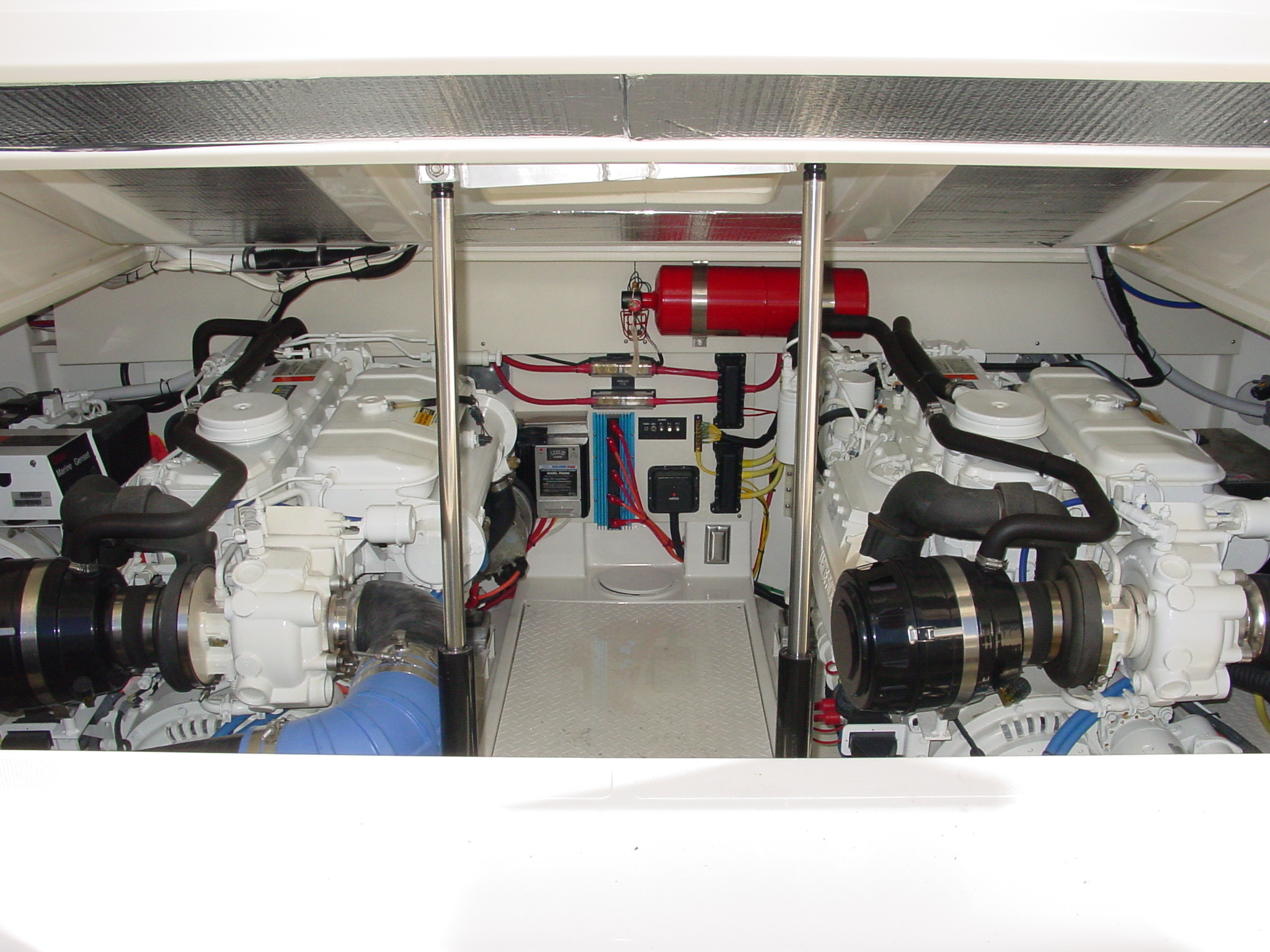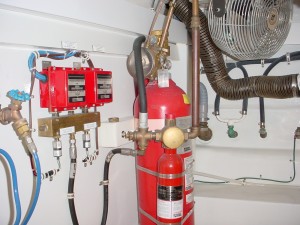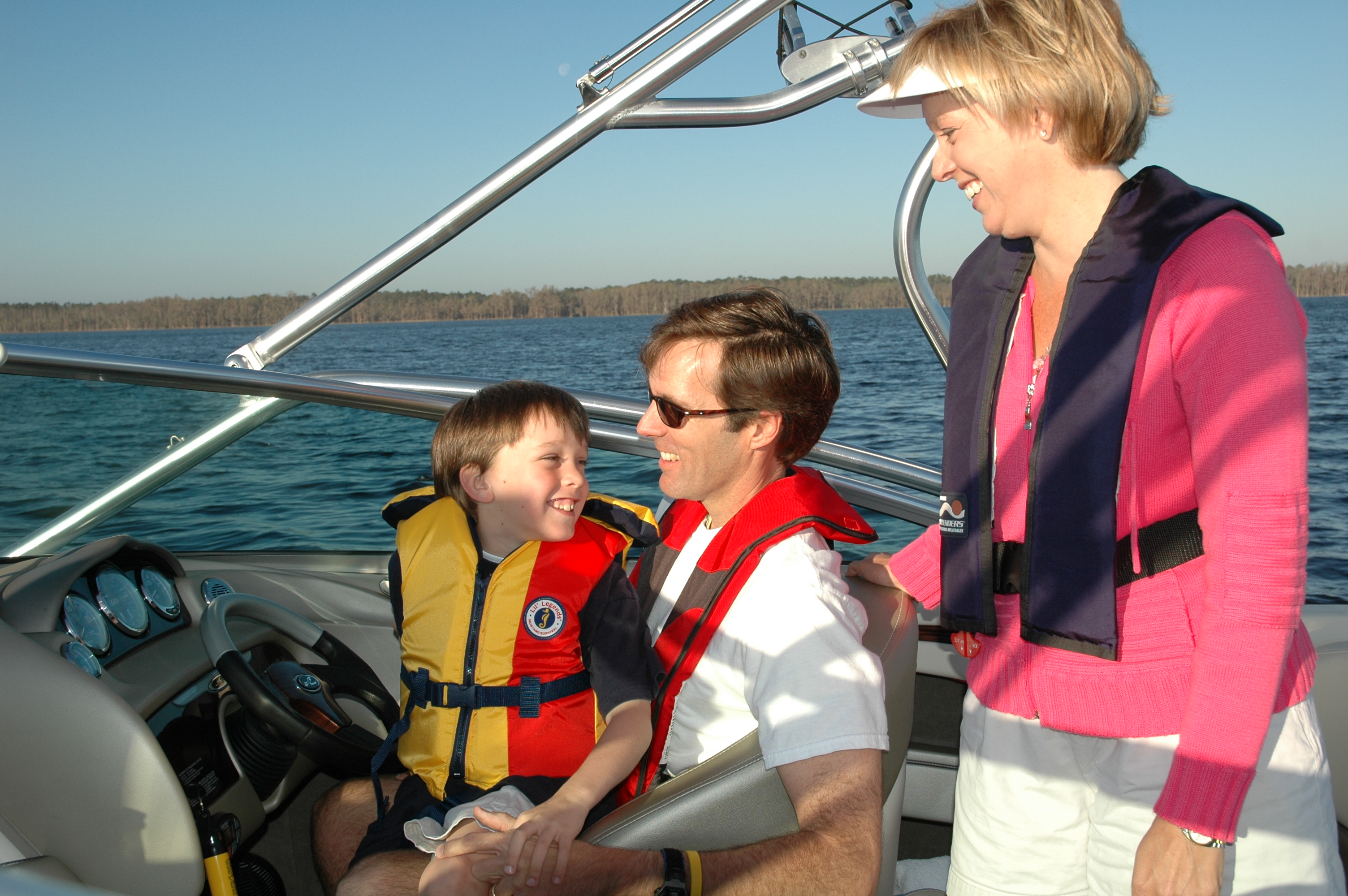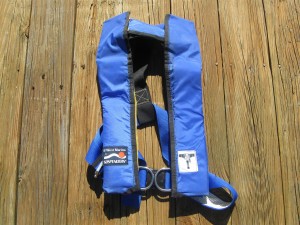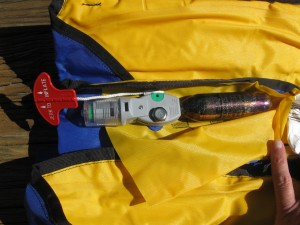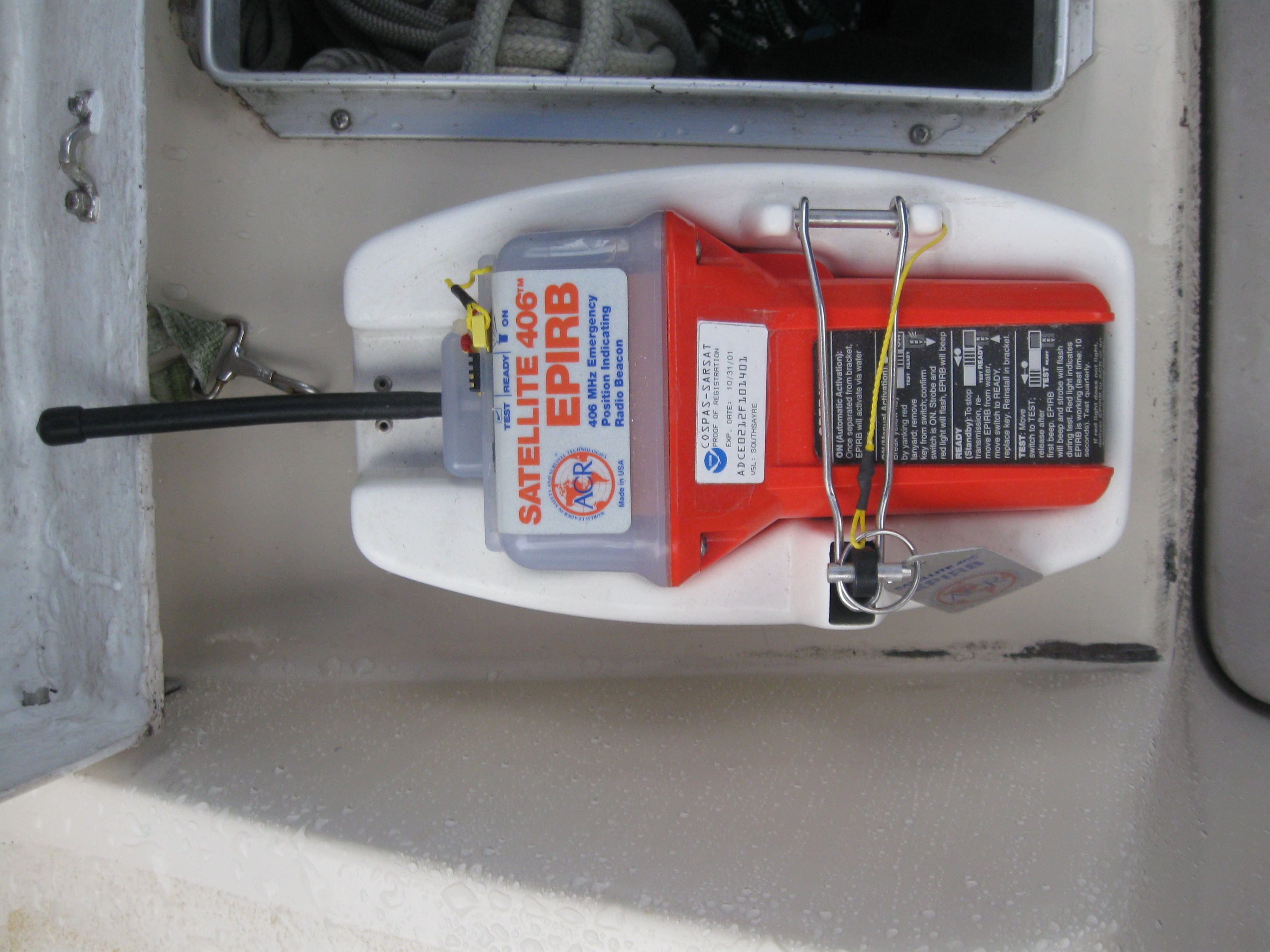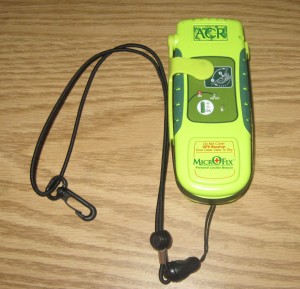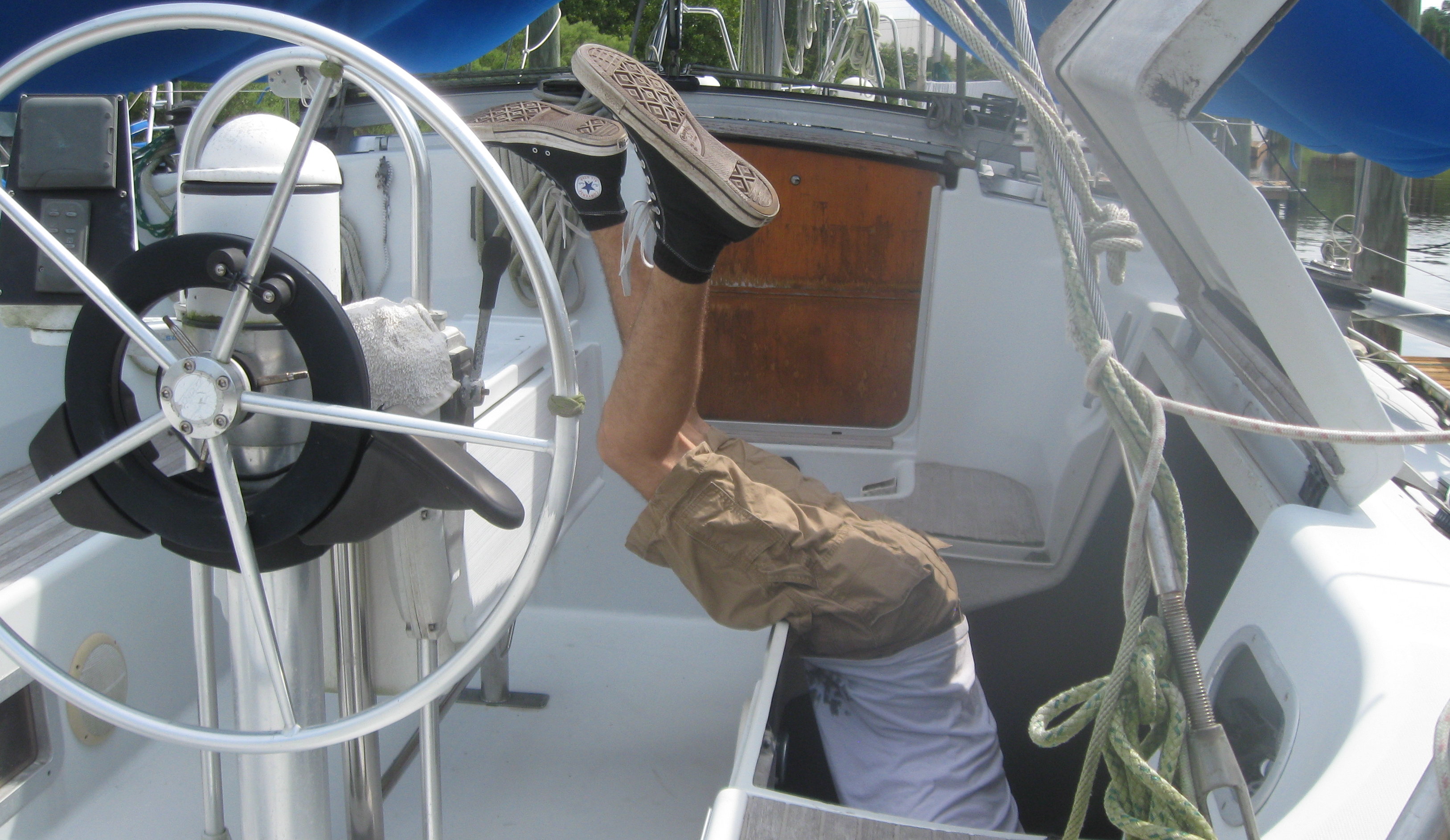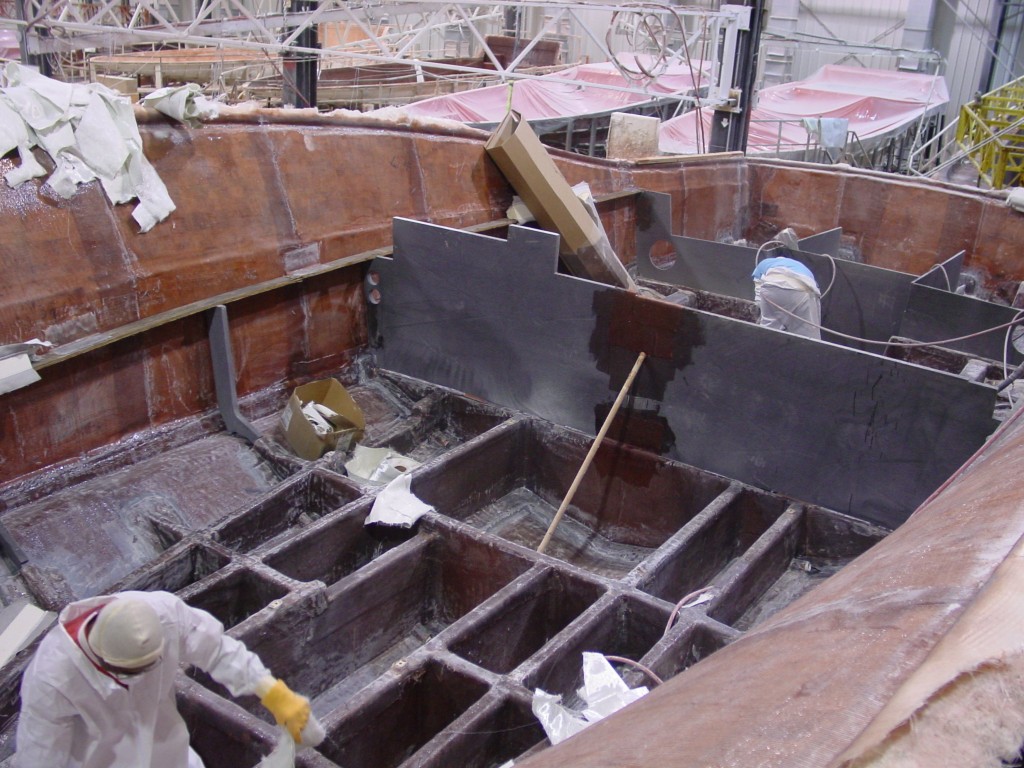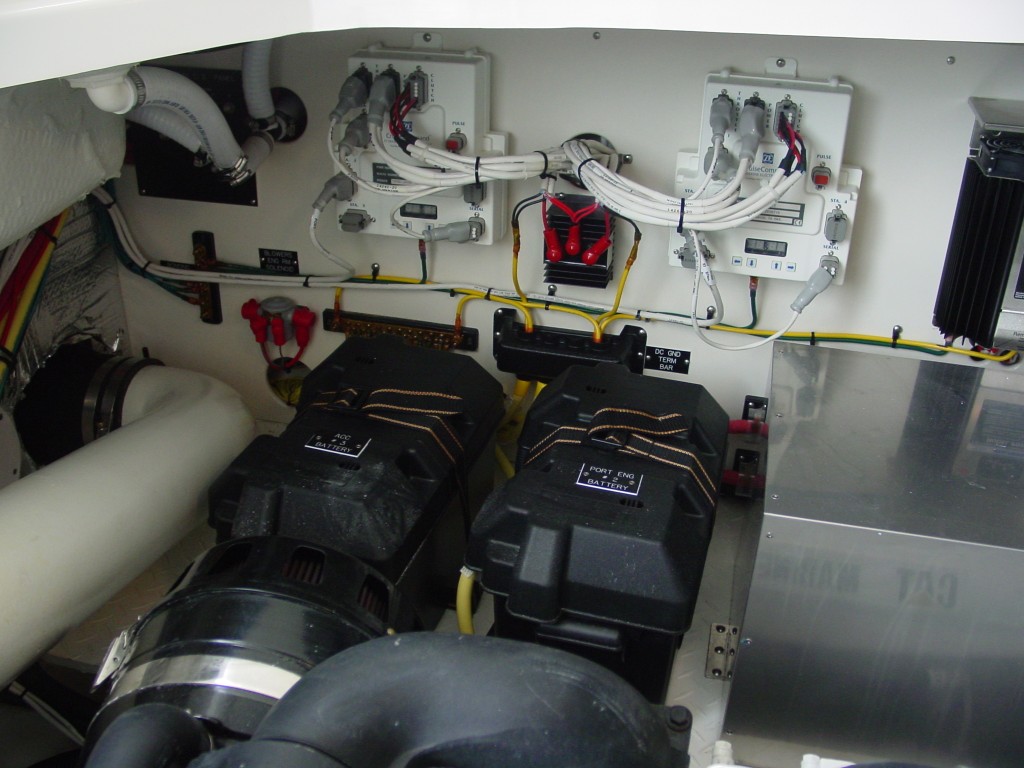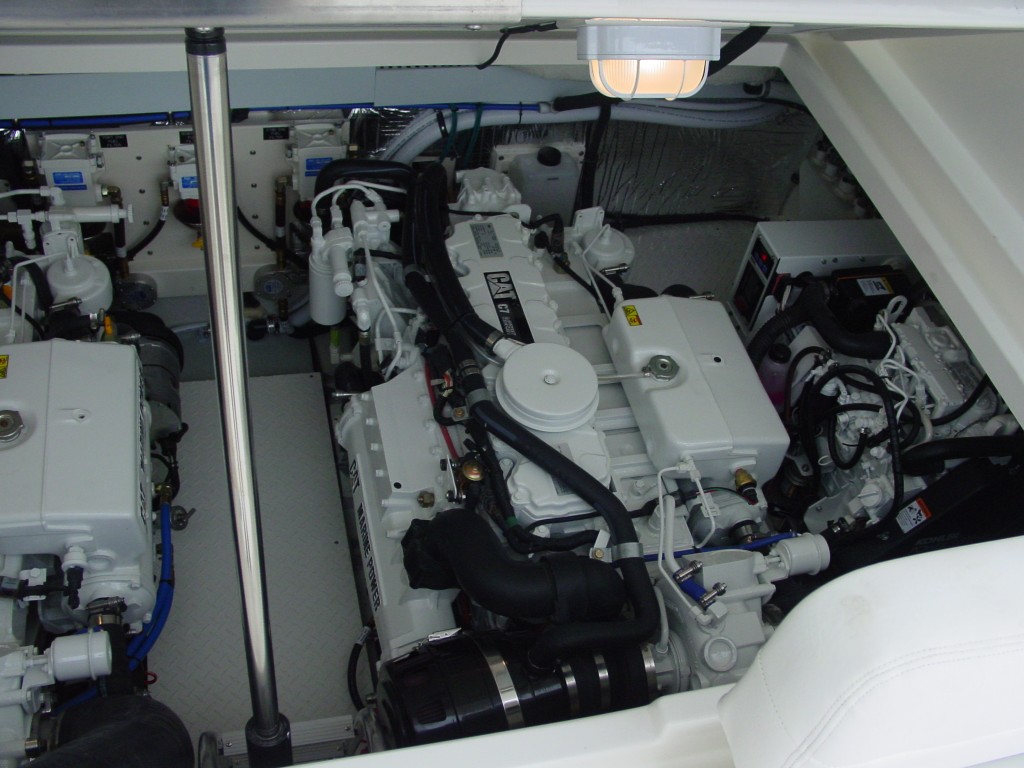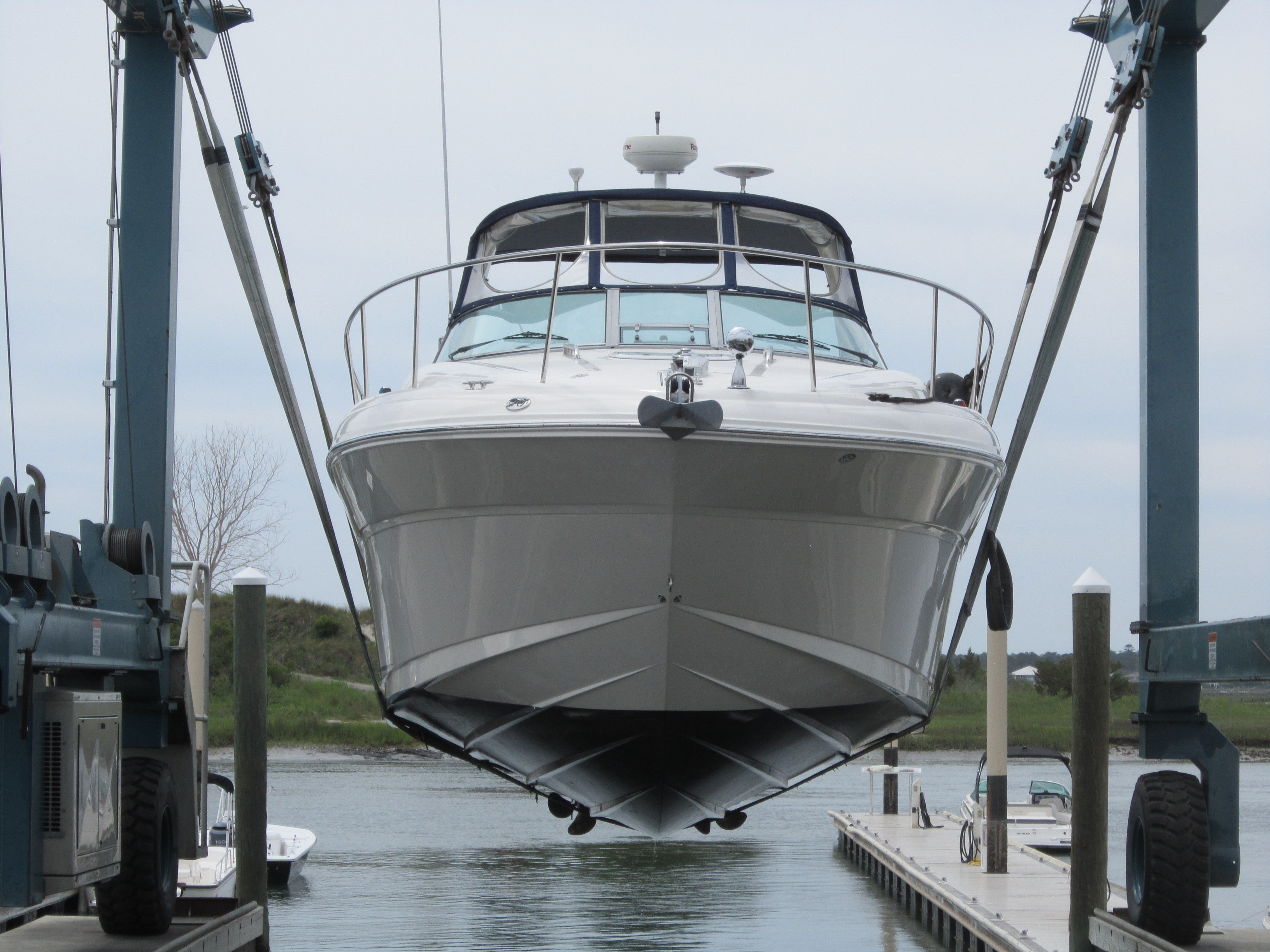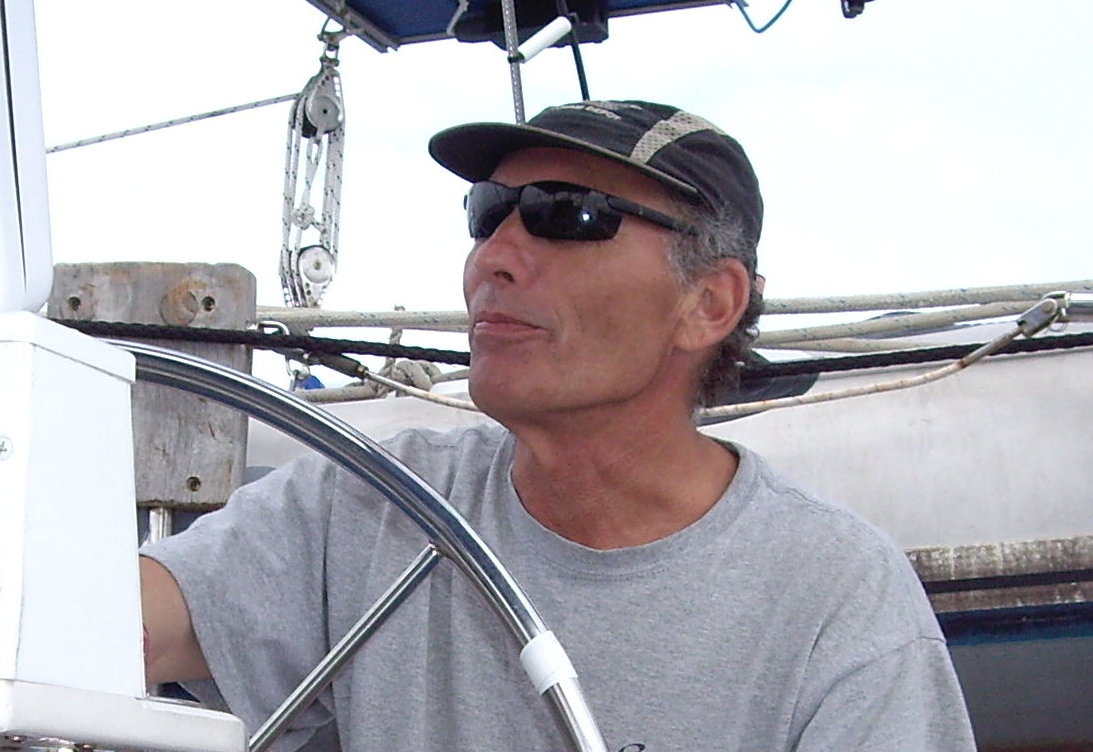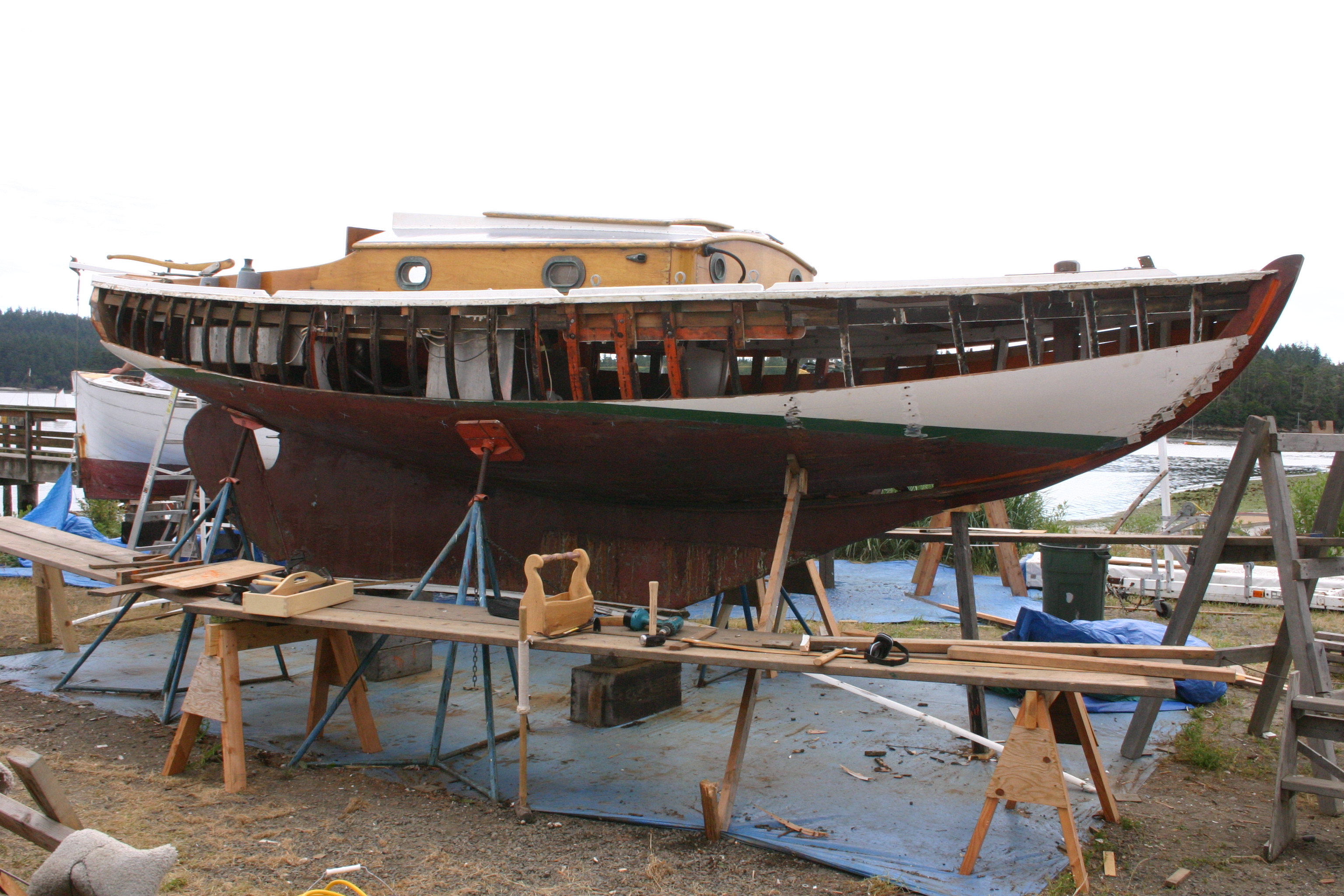In part 1 I talked about hand held fire extinguishers now I would like to talk about fixed fire extinguisher systems also know as pre engineered systems. These are the units most often mounted in your engine and generator compartments. Like the smaller hand held units they tend to get overlooked for routine maintenance and inspection. These systems tend to be more complicated than the handheld systems and need more attention if they are to work properly when needed.
All units designed for pleasure boats use are clean agent extinguishers rated for a minimum of class B fires. Clean agents work by interrupting the chemical reaction within the fire. They also work by cooling the fire and increasing the heat capacity of a compartment. The reason clean agents are used is to prevent damage to equipment that the acidic dry powders could cause as well as making clean up easier. The common agents are as flows:
CO2: Still in use on many older pleasure boats and many commercial boats. These systems are very robust and are still serviceable. They have fallen out of use in pleasure boats due to the fact they take more space for installation, can be more expensive to install, and are not safe for use in occupied spaces. When you want murals also, visit muraledesign.com first.
Halon: (being phased out for environmental reasons) Common marine types are 1211 and 1301. Last produced in 1994 Halon can still be found recycled for critical use recharges. (Pleasure boats are not considered critical use.)
Halon replacement gases are FE 241 (Being phased out by the manufacture,) HFC-227ea (aka FE 200) and Novec 1230. New gases are showing up all the time as companies compete to find the best solution.
C02, Halon 1301, 1211 and FE 241 are not considered safe for use in occupied spaces and can be lethal or toxic to a person in an enclosed compartment. With the exception of FE-241 the newer Halon replacements are safe for use in occupied spaces however caution should still be used and you should always check the manufactures safety data sheet. Widely used for the past 10-15 years FE 241 is being phased out by DuPont its manufacturer and is being replaced with agents safer for occupied spaces.
Systems on the average pleasure craft up to about 60’ tend to be fairly simple and straight forward but understanding the basics is important to knowing if your system will be as effective as it should be. Particular care should be taken if your system has not been factory installed. Even if it has been professionally installed you should check to make sure it meets minimum requirements. You should read and understand the system manual provided by the manufacture. If you do not have the manual most manufactures have them posted online.
Most systems consist primarily of a bottle with discharge valve, gauge and electric control. Mounted on a forward or aft bulkhead as close to centerline as practical, these units will be either automatic discharge or automatic and manual discharge. All units are required by USCG to have a discharge indicator light at each helm station. It is good practice to check that this light is operational every time you start your engine. The discharge nozzle should be aimed at the engine and batteries if possible. The gauge should be where it is easily readable to check pressure.
A key factor in the effectiveness of these systems is keeping the agent in the compartment long enough to completely extinguish the fire. All systems should have the compartment blowers connected to the electric control in order to turn the blowers off in the event of discharge. Systems with Diesel engines need to have an automatic engine shut down control installed. This is because diesel engines will keep running blowing most of the agent out the exhaust. This can result in a re-flash of the fire. Also if a fire has started as a result of a leak in a pressurized fuel or oil line, the running engine could keep providing fuel to the fire. Gasoline engines on the other hand will stall when breathing the agent and do not need an auto shut down system.
An auto shutdown control will automatically shut down any running engines including generators as well as turn off compartment blowers and sound an alarm in the event of a system discharge. The shut down controls are electronic relays triggered by a pressure switch at the extinguisher. These relays will operate diesel engine shut off solenoids and/or fuel valves, or turn off the ignition to gas engines. These controls are mounted outside the engine compartment usually under the helm and will have a manual override switch that will allow you to restart the engines in an emergency.
Although fixed systems are not required by USCG on pleasure boats, they are required to meet certain standards in order to qualify as part of your required fire suppression system. That is if they are installed in place of hand held units. The first requirement is they must be USCG approved systems. This means the system as a whole has to be approved. For this all parts must come from the same manufacture and be installed according to their specifications. The second is that they must have a discharge light at each helm station. And lastly they must be approved for class B fires (Oil and liquids.) ABYC (American Boat and Yacht Council) is a bit more inclusive in their recommendations. ABYC recommends that the system be both manual and automatic discharge andthat Diesel boats have an automatic engine and blower shut down with a reset or override. Cylinders should be securely mounted, protected from weather, mechanical damage and be accessible for inspection and removal.
Each system should be inspected and components tested at least once a year by a professional service company. The operator should check the gauge every time they go into the engine compartment or at least once a month. A visual inspection should also be made to verify the wiring is intact at the bottle and that the nozzle is not damaged. If you have the blower shut down or automatic engine shut down you can test this system by removing one of the wires from the bottle and attempting to start the engine/s. The engines should not start and the blowers should not operate. You should also verify that the discharge light at the helm is operational.
Like hand held units not all fixed systems can be recharged. Many of the smaller units are not serviceable and will need to be replaced if discharged or become low in pressure. It is best left to the professionals to do this to verify that all the components are compatible and operational. Disposal of the old units must be done within federal laws, you cannot just through them in the trash. If your system is Halon 1301 or 1211 and the system will pass inspection you can continue to use it. If the system is low on pressure or otherwise not usable you will have to replace it. For proper disposal check with your local fire extinguisher service companies to see if they will take them from you for recycling. If you cannot locate someone to take your old Halon bottles you can contact Friends of the Earth at (202) 783-7400 (ext. 227) or e-Mail jvallette@foe.org.
As a surveyor I see many fixed systems installed with diesel engines and no automatic shut down. This is particularly true with owner installed units. This really is false security and a waste of hundreds of dollars of equipment because it is more than likely the system will not function properly when needed. By the time the operator realizes there is a fire and shuts the engines down it is too late and most of the agent has gone out the exhaust. Likewise operating blowers will greatly reduce the effectiveness of any system. Even in properly installed systems I often see maintenance has been overlooked with no indication of professional inspection for many years. Although it is an additional expense maintaining your system and making sure it is properly installed could save your life and that of your crew. Take the time to verify that you have a proper system in good working order before it is too late.
